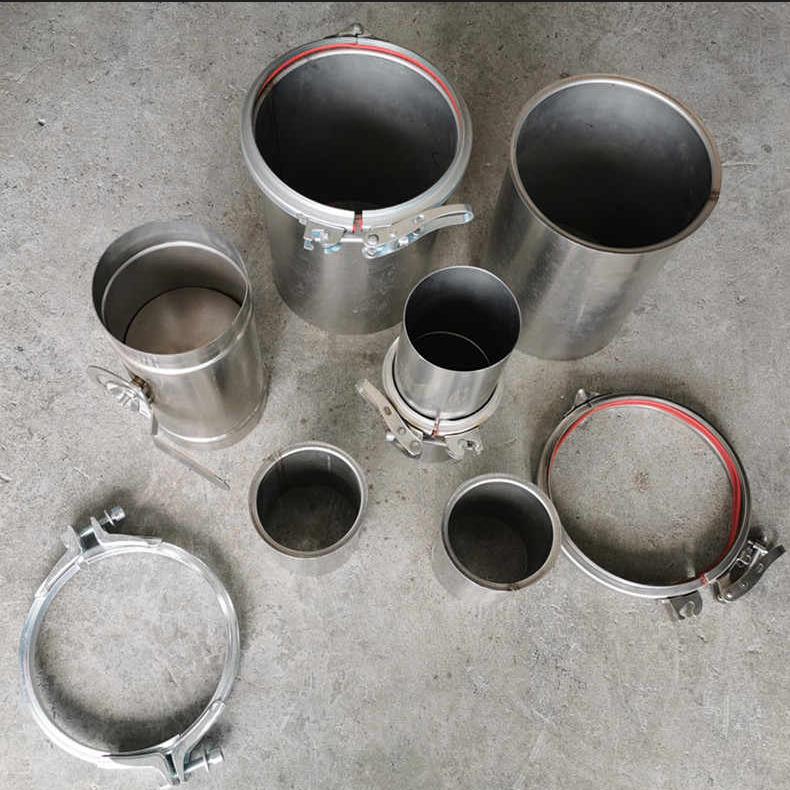Introduction
A dust collection ducting is a system of ducts (ductwork) attached to a dust collector to move and control the clean and dirty air. When it comes to dust collection, ducting is a crucial element in ensuring dust is safely removed from the premises and proper filtration can take place. Whether you’re in need of residential dust collection or industrial dust collection, having a dust collection system with properly-sized ductwork is essential for save and efficient dust management. We can sometimes often relate it to heating and cooling setups.
What are the Types of Dust Collection Ducting?
We have two types of ducting you can use for your dust collection system. These are rigid and flexible hose ducting:
What is Rigid Ducting?
A rigid ducting consists completely of metal. It is versatile and ideal for large-scale dust collection systems. Indeed, all commercial and industrial applications commonly use stainless or galvanized steel ductwork for their dust collection needs.

What is Flexible Ducting?
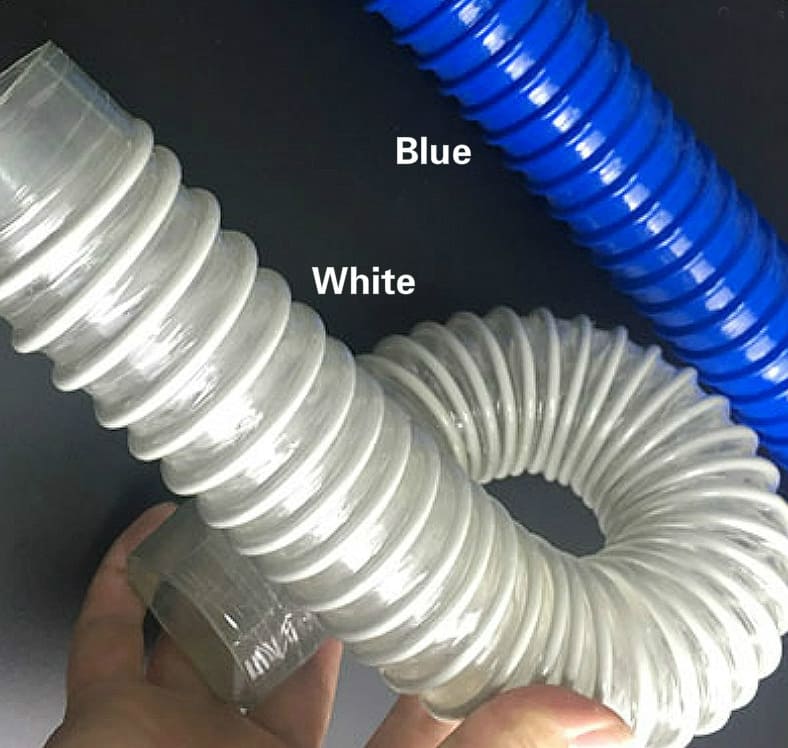
On the other hand, flexible hose ducting is a type of plastic or rubber piping and it is easy to bend it at different angles. It comprises flexible materials, such as PVC and polyurethane (PU). Additionally, this type of ducting usually has a steel spiral wire that enhances flexibility.
Why the Rigid Ducting Is Better?
The type of ducting you use for your dust collection system will affect its performance. Following this, you must choose wisely.
Some people prefer PVC pipes because they are light, cheap, and easy to tape. However, flexible hose ductwork is only suitable for short runs. Its soft nature encourages static pressure build-up and reduces airflow. That makes your system consume more energy and perform poorly.
Meanwhile, metal pipes are stronger, and more rigid, and minimize the chance of static pressure build-up. Its smooth and unbending interior reduces back pressure issues, even over longer distances. Moreover, corners, elbows, and other fittings come with exceptional design and generous space for smoother air movement.
What are the Types of Metal Dust Collection Ducting?
We can classify metal dust collection ducting into two categories. These include flanged and clamp-together ductwork. Let’s take a closer look at each below.
What Is Flanged Ducting?
Flanged dust-collecting ducting uses metal flanges to join two duct pieces. In this method, you fit the flanges on top of each end of the duct collar and then turn up the edge. Once the flange is placed, you bolt the flanges together using steel screws, nuts, and washers.
Alternatively, you can weld the flange to the duct and then bolt together the flanges on the ends of two duct pieces, it’s very strong, generally applied for big ducts . This technique has a couple of drawbacks:
-
It is time-consuming – You must skillfully attach the flanges to ensure proper alignment of the duct segments. In brief, misalignment will mess up the appearance and increase the risk of static pressure build-up.
-
Inflexibility – It is difficult to change or move the ducting system. In any case, the flanged ducting is discarded instead of re-configuring.
-
Not cost-effective – Its lack of flexibility makes it less cost-effective.
Flanged Ducting
Clamp Together Ducting
What Is Clamp Together Ducting?
It is a more viable method of fitting duct pieces together without bolting or custom metal fabrication. Clamp-together dust collection ducting is a more viable option because it reduces the risk of accumulating static pressure. That means that this ducting system carries fine dust particles more effectively.
What’s more, the installation time is also relatively small, typically a matter of minutes. Other advantages of clamp-together ducting include the:
Better alignment – The method offers perfect alignment because it does not use bolts.
Versatile and more reliable – Clamp-together ducting construction follows strict industry standards that ensure maximum efficiency and serviceability
Easy to assemble and disassemble – You can easily dismantle and assemble clamp-together ductwork. That makes it easy to clean.
Quick-installation fittings – The market has lots of components to choose from, including bast gates, elbows, cut-offs, reducers, and branches.
What Is the Best Dust Collection Ducting Layout?
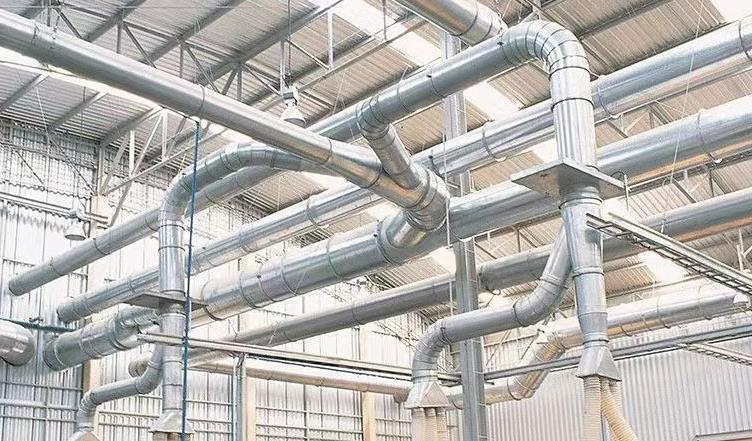
The way in which you lay and install your dust collection ducting directly affects the performance of your system. A correct design allows smoother airflow and eliminates resistance in the dust collector corrector. Conversely, a poorly designed layout leads to poor air movement and ultimately makes your duct collector less efficient.
Ensure you choose the correct pipe diameter, the best material, and suitable air-flow components to create an effective ductwork system. An optimally performing dust collection system ensures a cleaner and healthier workplace and promotes workers’ safety.
Subsequently, having a cleaner woodworking shop ensures maximum machinery efficiency, longer lifespan, and compliance with occupational exposure regulations or guidelines.
How Can I Optimize My Dust Collection System?
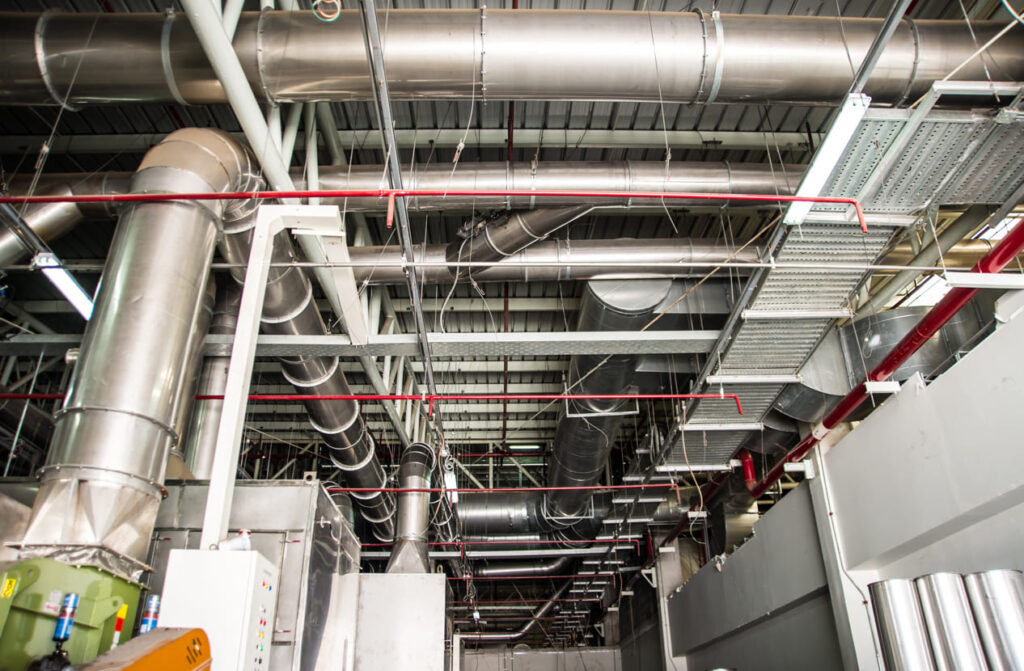
As we have said, duct layout is an essential feature of dust collection systems. Proper ductwork allows air to move at an appropriate velocity and carry wood dust efficiently. The following are some of the best practices for optimizing your system:
Use Metal Ducting – We noted that metal is the better option for dust collection ducting due to its metal advantages. This material lowers the chance of static pressure build-up, reduces back pressure problems, and ensures better equipment performance.
Use Less Ductwork – Focus on minimizing the number of pipes to maximize the performance of your dust collection system. Few ducts will reduce static pressure and lower the machine energy consumption.
Choose Short and Straight Ducts – Short and straight pipes help maximize air speed and minimize static pressure. Moreover, straight ducts minimize wear and tear. If you must create turns or curves, ensure they are as gradual and gentle as possible. Try to allow the primary duct to lead straight into the inlet as much as possible. For example, instead of using two 90-degree bends, you could try two 45-degree ones.
Ensure Accurate Pipe Sizing – Size is a critical factor to consider during your dust collection system installation. Proper sizing for your ductwork ensures appropriate carrying velocity to keep dirt moving through. Pipes with an accurate diameter allow better air movement and create minimal static pressure. Using ducting pipes that are too wide reduces air velocity moving particulates. Similarly, if you choose a duct too small, your system will experience low airspeed to carry fine dust.
Minimize Resistance Near the Dust Collection Points – Avoid corners and elbows near the dust collector to minimize resistance in your dust collection system. If you must create a corner, or a tight 90-degree turn, implement a longer radius elbow instead. A longer radius elbow at the dust collection points minimizes the effect on overall performance.
Use a Cyclone Separator – A cyclone separator can help your dust collection system collect up to 99% of all the dust before it reaches the filter. By collecting more dust particles from the air stream and depositing them into a collection point before reaching the filter, this component saves you from cleaning your filter too often. This convenience makes a cyclone separator one of the most common woodworking shop accessories.
Duct Sizing and the CFM

A dust collection ducting size depends mainly on the CFM (cubic feet per minute) of the system. The CFM is often regulated by the speed and capacity of the dust collection fan installed. For that, systems are usually sized with a fan that provides slightly more than the maximum CFM required for the collection system.
The CFM of your dust collection system also depends on the tools you use in your woodwork. For example, the wood dust you get from a belt sander may require a CFM of about 400. But a large table saw may require a CFM of between 600 to 900. In conclusion, 400-1000 CFM is sufficient for most woodworking equipment. The airflow amount varies depending on the number and size of woodworking tools running in your shop simultaneously.
What is the Correct Dust Collector Size?
In addition to ensuring proper ducting design and layout, you must choose the right dust collector for an effective and affordable dust collection system. Selecting a suitable dust collector is a matter of sizing up dust collection needs and purchasing a machine appropriate for the dimensions of your shop, your woodworking habits, and the tools in your woodshop.
Small Dust Collection System
A small, portable dust collector is a good choice if you work in a compact, solo wood shop and are more concerned with affordability and simplicity. A mobile dust collector is moved from one machine to another and connected to the woodworking only when in use. That keeps it close to the tool and improves the ability to draw in large amounts of dust.

Large Dust Collection System
Conversely, a large and powerful dust collector will convey more air with greater friction-overcoming force than a portable unit. Therefore, it’s ideal for servicing a machine that produces voluminous debris amounts.
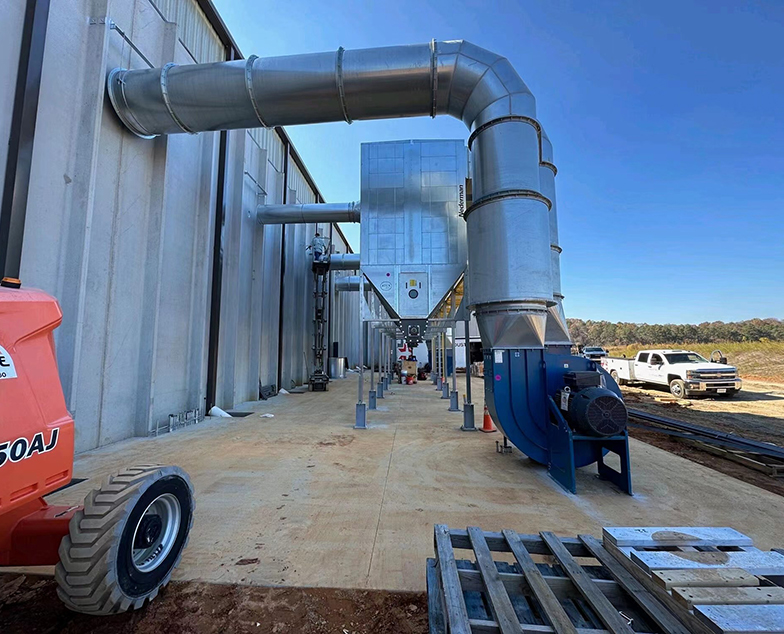
Conclusion
In nearly every woodworking environment, wood dust is a potential trouble. These types of wood debris or particles pose health and fire risks. Employing a dust collector is vital to keep this problem out of your wood shop.
A heavy-duty dust collection system will help you eliminate these airborne contaminants at their very origin. However, your dust collector will not resolve the wood dust problem without proper dust collection ducting. You must do your duct design and layout right to optimize the performance of your dust collection system. Consult a professional for a plan that ensures your ducting is up to the task.
A dust collection ducting size depends mainly on the CFM (cubic feet per minute) of the system. The CFM is often regulated by the speed and capacity of the dust collection fan installed. For that, systems are usually sized with a fan that provides slightly more than the maximum CFM required for the collection system.
The CFM of your dust collection system also depends on the tools you use in your woodwork. For example, the wood dust you get from a belt sander may require a CFM of about 400. But a large table saw may require a CFM of between 600 to 900. In conclusion, 400-1000 CFM is sufficient for most woodworking equipment. The airflow amount varies depending on the number and size of woodworking tools running in your shop simultaneously.

